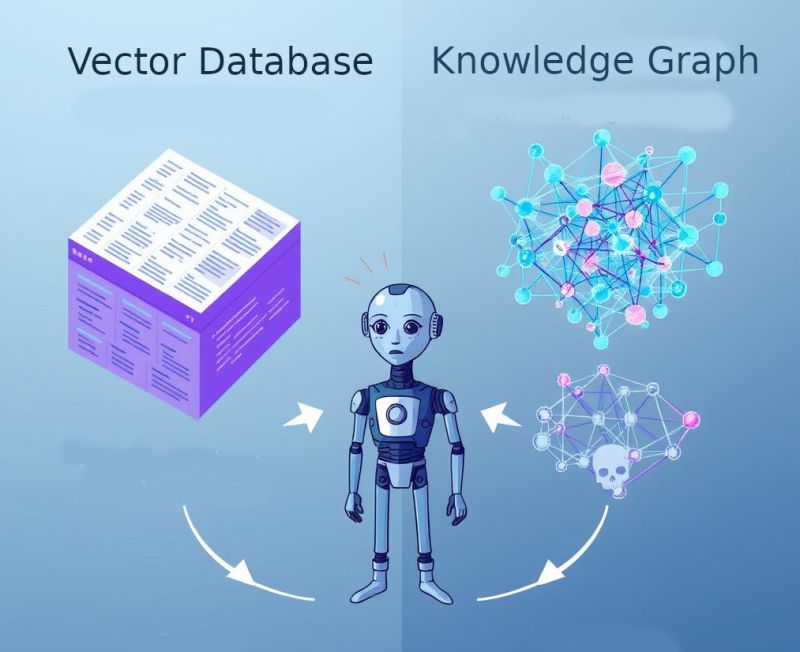- 07
- May
- 2025
Knowledge Graphs vs. Vector Databases for AI and when not to use them.

Key Limitations of Traditional RAG Systems
Traditional Retrieval Augmented Generation (RAG) systems using vector databases struggle with complex knowledge bases
They often miss connections between similar data and broader themes across information
The flat structure of vector databases limits contextual understanding
Knowledge Graphs as a Superior Alternative
Knowledge graphs offer structured, hierarchical information organization
They mirror human cognition by representing data as entities and relationships
Knowledge graphs enable more effective traversal of information paths
Fundamental Components of Knowledge Graphs
Entities: Distinct objects, people, places, events, or concepts (nodes)
Relationships: Connections between entities (edges)
Communities: Clusters of related entities creating hierarchical granularity
GraphRAG: Automated Knowledge Graph Creation
Large Language Models (LLMs) can automate the resource-intensive process of building knowledge graphs
GraphRAG (Microsoft tool) workflow:
Text is chunked into smaller segments
Entities and relationships are extracted using LLMs
Subgraphs are merged and summarized
Embeddings are created for nodes
Community detection algorithms group related entities
Community reports are generated and embedded for retrieval
Advanced Querying Techniques
Local Search: Uses semantic search to find relevant entities, traverses the graph, and combines connected information
Global Search: Uses embedded community reports to answer broad thematic questions (an area where traditional RAG struggles)
Drift Search: Combines global and local search, using hypothetical document embeddings to start with broad context before refining
Benefits for AI Agents
Knowledge graphs provide AI agents with memory and ability to update information over time
They simplify fact extraction and knowledge updating, crucial for maintaining relevance
Multi-Agent Systems for Knowledge Graph Enrichment
Updating knowledge graphs with new information is complex
Multi-agent systems with specialized agents for subtasks improve efficiency:
Document retrieval agents
Summarization agents
Entity extraction agents
Conflict resolution agents
Evaluation agents to assess knowledge quality
These agents are retrained periodically to adapt to new information
RAG vs. GraphRAG Comparison
RAG treats everything as flat text chunks
GraphRAG maintains structured relationships
GraphRAG preserves context better
GraphRAG enables multi-hop reasoning
Why would you not use Knowledge Graphs?
First rule of building systems, KISS. Keep it simple stupid. Complex systems are hard to design, slow to build and easy to break.
Knowledge graphs are expensive to build, sometimes thousands of API calls to LLMs to construct and computationally intensive during retrieval.
Storing and scaling knowledge graph setups is challenging.
Defining schemas and structures for knowledge graphs may require domain expertise.Activate to view larger image,